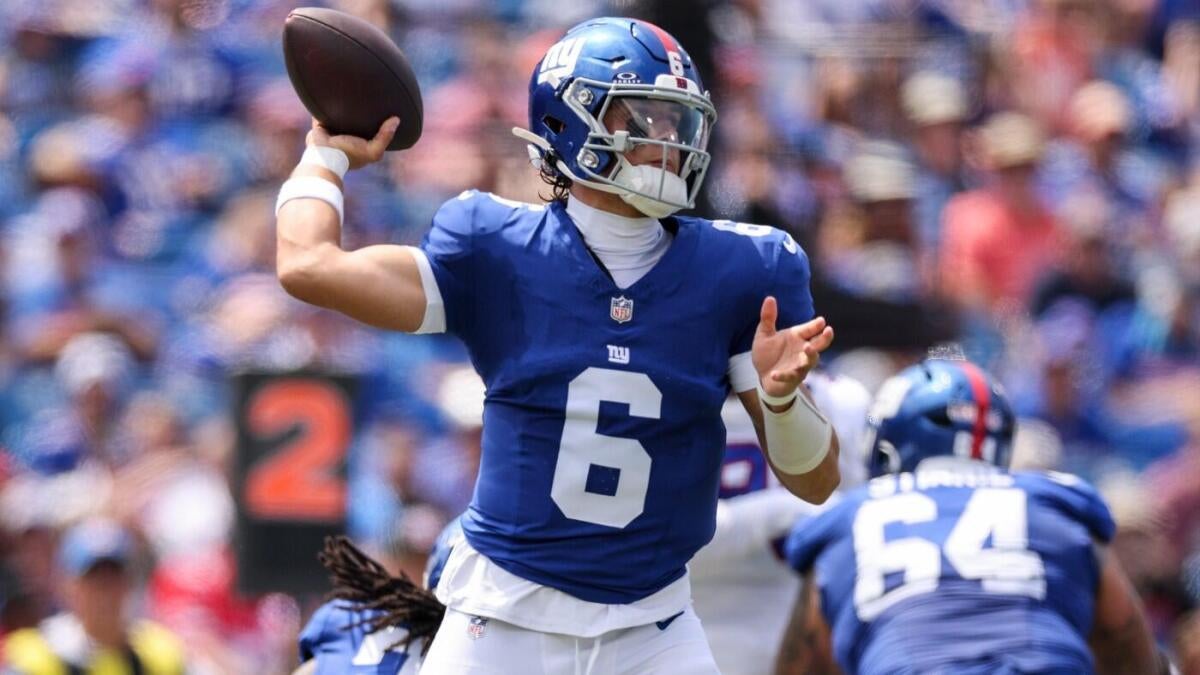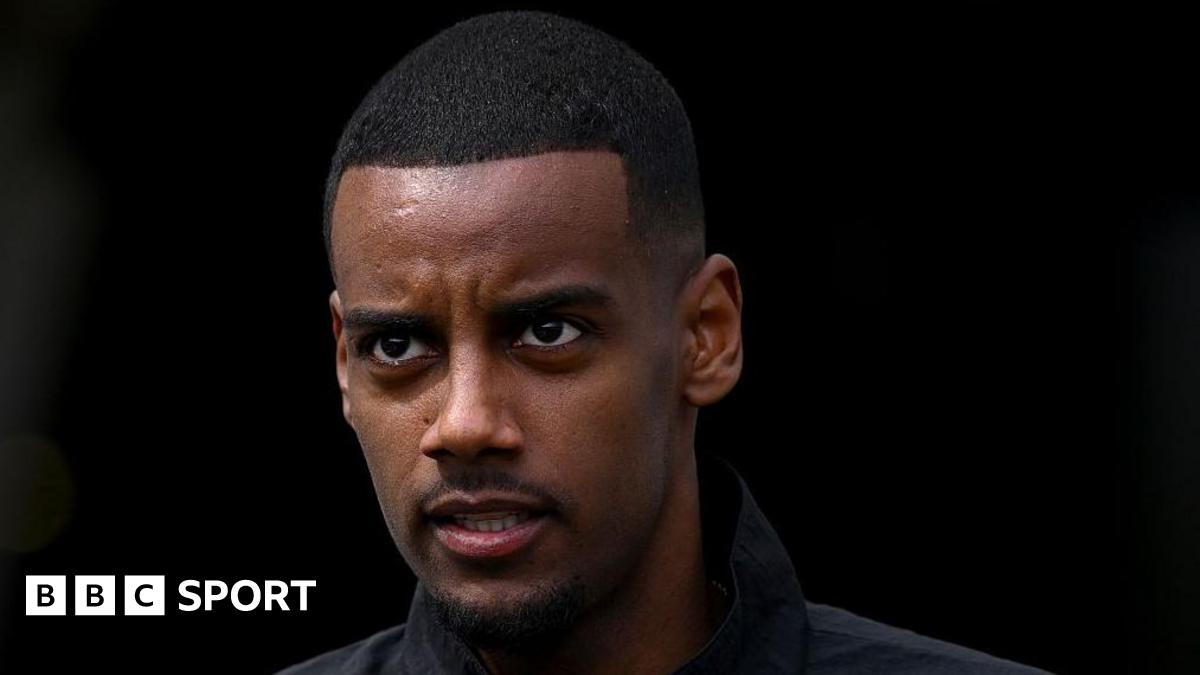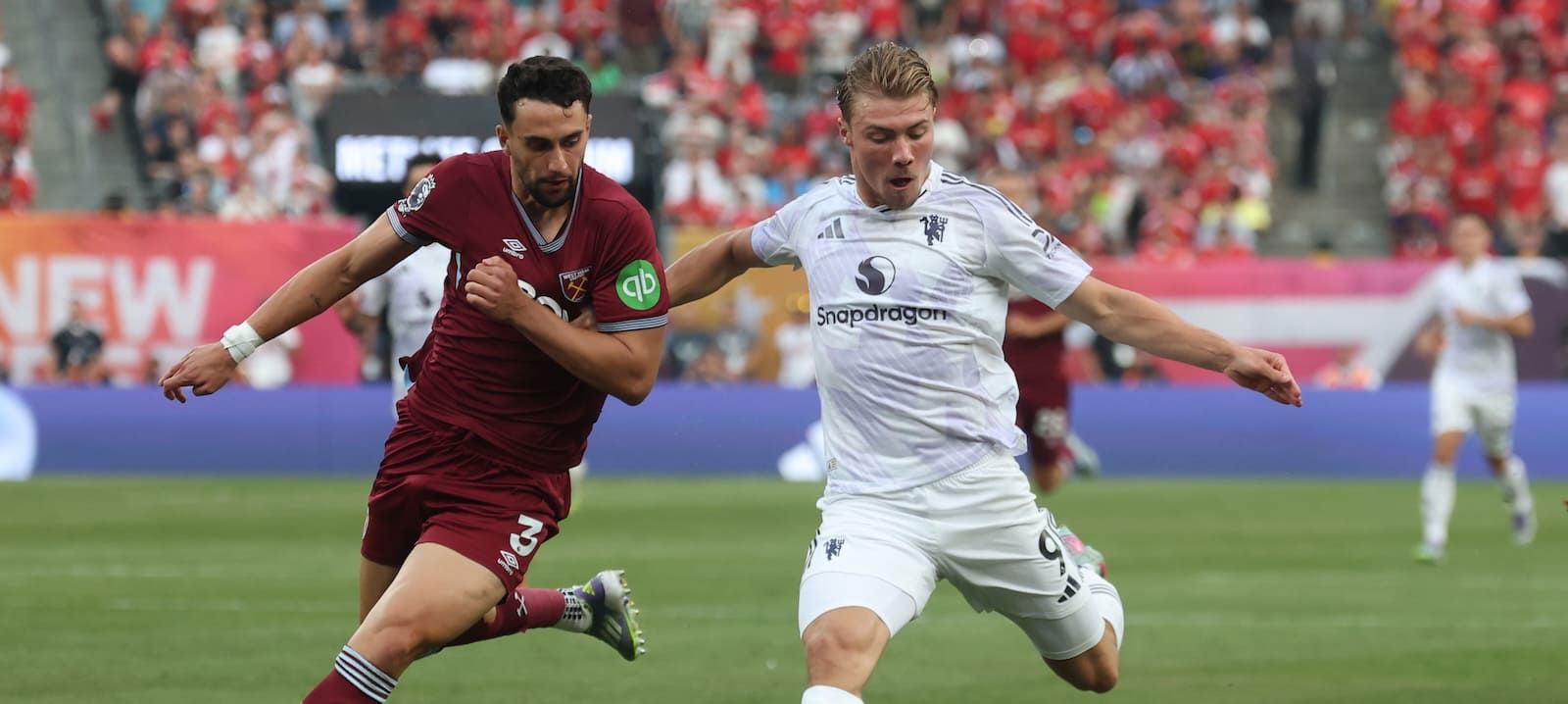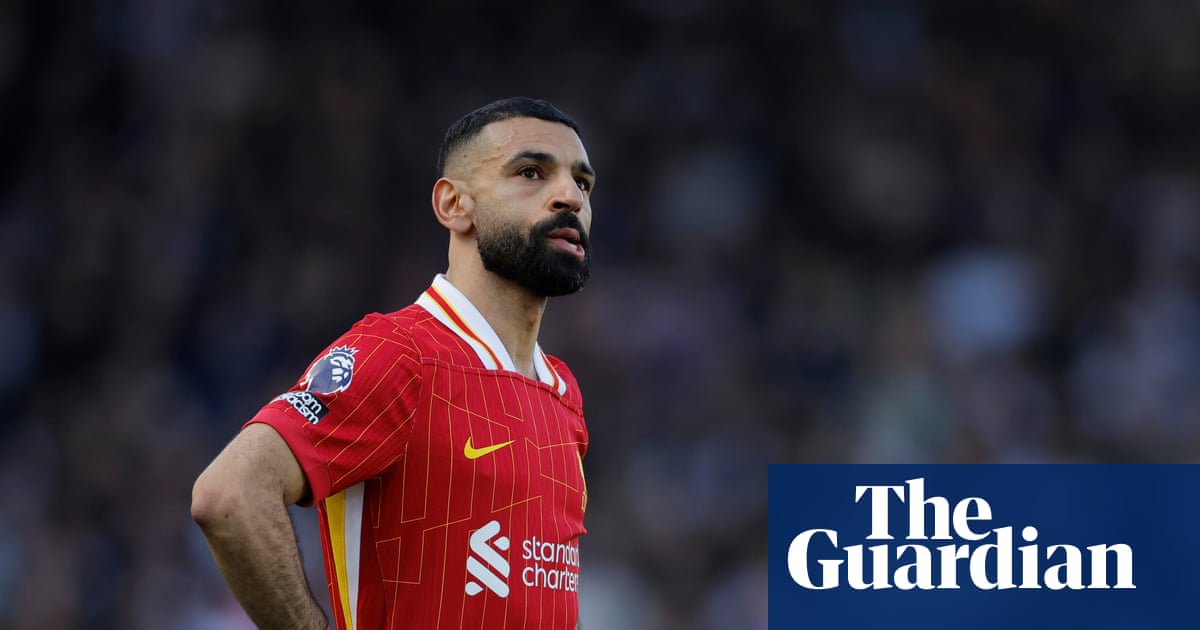Inside Benjamin Sesko’s Manchester United transfer - and how they beat Newcastle to the deal

As recently as a few weeks ago, some influential figures at Manchester United still felt signing Benjamin Sesko this summer was not especially plausible. RB Leipzig’s asking price was high, potentially too high for a player with a modest scoring record in the Bundesliga.You might say the feeling was mutual. While in talks with Arsenal, some familiar with the matter — who, like others who spoke to The Athletic, remain anonymous to protect relationships — say Sesko at that point considered himself beyond joining a club without European football, who had finished 15th in the Premier League, 32 points adrift of their counterparts at the Emirates.AdvertisementArsenal’s years of groundwork on a deal to sign Sesko ultimately proved for nought, however, as Andrea Berta’s appointment as sporting director gradually turned their attentions towards Viktor Gyokeres.In north London, they too were eventually deterred by the financial obligations of any deal, as well as the challenges of negotiating with Sesko’s representatives. And once Arsenal were out, they noted they had been the only club actively pursuing a deal.Manchester United had concentrated their efforts elsewhere, initially on Liam Delap. After Chelsea were given the green light to trigger Delap’s £30million release clause, calls were placed for Gyokeres and Hugo Ekitike rather than a player who scored 13 goals in 33 Bundesliga appearances last season.And at that time, even Newcastle United were looking elsewhere in the belief that they would not be able to compete financially for a player that they nevertheless admired.Sesko had told team-mates on Leipzig’s post-season tour in Brazil he would be leaving this summer. An agreement was in place with officials at the Red Bull Arena which allowed him to go if what they agreed was a “special” club offered between €80-90m.Leipzig’s strategy during the summer transfer window demanded that they raised €100m through player sales, but did not necessitate Sesko’s departure. When Arsenal withdrew, it left them prioritising other sales and planning for the season ahead with the forward.Yet once Alexander Isak made clear his desire to leave St James’ Park and asked not to travel on Newcastle’s pre-season tour to Asia, Sesko was quickly thrown back into the centre of a short, sharp tug of war that was still one of this summer’s more complex transfer sagas.(Photo: Manchester United)After losing out on Delap, Manchester United’s priorities at the end of last season were more focused on the two No 10 positions in Ruben Amorim’s 3-4-2-1 system than a centre-forward. The signing of Matheus Cunha was, eventually, followed by that of Bryan Mbeumo.As the protracted negotiations with Brentford for Mbeumo reached their conclusion, chief executive Omar Berrada and director of football Jason Wilcox attended a fishing trip in Iceland called at Sir Jim Ratcliffe’s behest, which people familiar with the matter was key to crystallising their approach to remaining weeks of the window.Further meetings between Amorim, Berrada and Wilcox during the United States leg of the pre-season tour, held at Manchester United’s training base and the Waldorf Astoria hotel in Chicago, resulted in Sesko emerging as their priority in the position.Joel and Avram Glazer were also staying at the same hotel at the same time for a period in the second week of the trip, and, as is customary on major transfers, they agreed to the plan, although they were not key parts of the decision-making process. The decision to go for Sesko had been made before their arrival.AdvertisementSesko had always been considered among Manchester United’s highest-rated candidates for a new centre-forward. Had they missed out on him, as they did with Gyokeres and Ekitike, attentions would have turned to Aston Villa’s Ollie Watkins and Chelsea’s Nicolas Jackson. Villa had long since told United their forward was not for sale, though some still believed he was gettable at the right price.United made a late attempt to sign Ekitike (Nick Taylor/Liverpool FC/Liverpool FC via Getty Images)Sesko was their priority, though. The influence of Christopher Vivell, director of recruitment, is clear in the pursuit of a player who he first plucked out from the youth ranks of a club in the Slovenian top flight.Vivell was Red Bull Salzburg’s head of recruitment when Sesko joined from Domzale in 2018, and he successfully saw off competition for the 16-year-old from his future employers at Old Trafford. Manchester United revived their interest four years later only for Sesko to reunite with Vivell, then technical director at Leipzig.Vivell advocated strongly for the transfer but he did not need to persuade Berrada, Wilcox or Amorim of the Slovenia international’s ability. Sesko was Manchester United’s primary striker target during the early days of INEOS’s first summer window in charge, only for focus to shift to Joshua Zirkzee.A move was also explored before Rasmus Hojlund joined in the summer of 2023, although it did not progress far. In any case, Manchester United’s extensive scouting of Sesko dated back seven years, meaning they had a wealth of data and reports on the 22-year-old as supporting evidence for a renewed pursuit.They were far from the only long-standing admirers of Sesko, though. Newcastle came close to an agreement during the summer of 2022 — the year Isak joined — and interest on Tyneside never waned.Contact was maintained with Sesko’s camp, with him earmarked as a potential replacement in the event of Isak’s departure. Once Isak asked not to travel on tour and the likelihood of that exit coming this summer greatly increased, St James’ Park officials began exploring a move.AdvertisementArsenal’s pursuit had an influence, with key Newcastle figures believing that if the Emirates club had considered Sesko a key target then, as a fellow Champions League club, they should be in the race too. Newcastle had already competed with European rivals Chelsea for Delap and Joao Pedro this summer.Newcastle’s involvement hastened Manchester United into action, leading to the Chicago meetings between Amorim, Berrada and Wilcox, and left both clubs to make their pitches to the Sesko camp.Wilcox and Berrada had discussions with Ratcliffe in Iceland (Catherine Ivill – AMA/Getty Images)Amorim held a Zoom meeting with Sesko last week, while director of football negotiations Matt Hargreaves met his agent Elvis Basanovic on multiple occasions for initial talks on personal terms and commission fees.On Newcastle’s side, there were complications beyond Isak. With no sporting director or chief executive in post, it meant head of recruitment Steve Nickson was responsible for dealing with Sesko’s camp, leaving Andy Howe, assistant head of recruitment, and Jamie Reuben, a minority owner, to handle club-to-club talks with Leipzig.There was optimism that initial conversations between Newcastle and Sesko’s camp had gone well, albeit without ending in a firm commitment to choosing St James’ Park. Sesko’s representatives informed both parties that they were undecided and would need time to consider their options.More meetings were held on Friday and, over the course of the following 24 hours, Newcastle submitted their opening offer to Leipzig of €75m plus a further €5m in add-ons.Sesko’s camp were taken aback by the timing of Newcastle’s offer, as it did not follow their plan for how the process should evolve.That was perhaps because of suspicions at Newcastle that the Sesko camp were holding out for Manchester United, biding their time until their counterparts at Old Trafford were ready to table a formal bid.AdvertisementBasanovic flew into Leipzig from Oxford on Saturday afternoon, having completed another client’s loan move to Oxford United. Meetings were held that evening after the Bundesliga club’s pre-season friendly against Atalanta. Sesko is described by one person in the industry as Basanovic’s “life’s work” given his importance as a client.Sesko will be playing at Old Trafford this season (Sebastian El-Saqqa – firo sportphoto/Getty Images)Newcastle’s offer was deemed insufficient by the Bundesliga club, although not rejected out of hand, and talks continued.Some people familiar with the matter believe that by offering a package worth a total of €85m, Newcastle met Leipzig’s valuation and a club-to-club agreement could have been reached quickly, but an intervention by Manchester United followed and shifted the negotiating parameters.Old Trafford’s decision-makers still stopped short of submitting an opening offer, however, as they awaited a clear indication from Sesko’s representatives that they were his preferred destination.Those with knowledge of Manchester United’s strategy to the talks say they hoped for Sesko to act as Mbeumo had with Brentford, by making it clear to his club that he only wished to move to Old Trafford, paving the way to negotiate on price without pressure from competitors.That clarity would eventually arrive, but not before Newcastle received encouragement from the Sesko camp that he would be willing to join. Positive talks on Monday — a day where Reuben was working flat out on the deal — ended with an improved offer from Tyneside of at least €80m. They had, in their words, put their best foot forward.Confidence remained at Old Trafford, however. Executives reasoned that a deal with Newcastle would already have been done if they were Sesko’s preference. Manchester United’s opening offer of €75m plus €10m in add-ons was finally submitted on Tuesday morning.Newcastle agreed an initial €82.5m fee plus €2.5m in add-ons with Leipzig later that day. Yet as the hours ticked by, all parties became clear of Sesko’s preference — he wanted to join Manchester United.Reuben, left, worked hard on the deal after the departure of Mitchell, centre (Robin Jones/Getty Images)Hargreaves and Vivell spent the subsequent days in Leipzig finalising a deal. Talks between the two clubs were described as professional, completed in only a few days, in sharp contrast to negotiations with Brentford for Mbeumo.An agreement of €76.5m plus a further €8.5m in add-ons was reached on Thursday afternoon — the initial fee €6m lower than that agreed by Newcastle, albeit still amounting to a total €85m package.AdvertisementInternally, Manchester United valued Sesko around £75m. Some people familiar with the matter believe they would have been willing to match the £79m package Liverpool committed towards the signing of Ekitike. A potential £73.7m outlay is still significant, but south of both those numbers.Meanwhile, Newcastle officials were crestfallen. Despite “fighting tooth and nail” and receiving indications that Sesko could be persuaded, there were always misgivings that he would ultimately prefer to move to Manchester, leaving a sense that their interest had only served to drive up Sesko’s salary demands. With Isak’s future still opaque, it returned them to square one.At which club Sesko stood to earn more is a point of contention. The Slovenia international’s wages are said to sit within Manchester United’s existing structure. Sources at Old Trafford claim he is not earning more than he was offered by Newcastle.This is contested at St James’ Park, with people familiar with the matter either claiming that their offer was equal to or significantly lower than that on offer in Manchester. Others contend that Newcastle’s wage structure did not allow them to offer much more than £200,000-per-week, inclusive of bonuses.It is, in any case, worth noting that the majority of Manchester United players’ contracts are subject to a 25 per cent reduction during seasons spent outside the Champions League.Other factors, like the uncertainty over Isak’s future, did not help Newcastle’s cause. Not for the first time this summer, officials were unable to definitively tell a transfer target whether they would be playing alongside the 25-year-old or not.Isak’s desire to leave kickstarted the race for Sesko (Owen Humphreys/PA Images via Getty Images)By contrast, Sesko can be confident of arriving at Old Trafford as first choice. Manchester United remain willing to sell Hojlund, who is available for just over £30m and has attracted interest from Milan, although he is not part of the so-called ‘bomb squad’ currently exiled under Amorim. United are also open to a loan arrangement if they cannot strike an acceptable sale figure.AdvertisementProgress has been made on Alejandro Garnacho’s exit, with Chelsea talks opening, and Marcus Rashford’s loan to Barcelona relieved the burden of his pay packet, but the attempts to raise more than £150m by selling through those out-of-favour has so far failed to bring in any fees.Sales were thought to likely be critical before further signings, although internal deliberations took place earlier in the summer to investigate whether another new arrival beyond Cunha and Mbeumo was possible first. The attempt to sign Ekitike also showed money could be found if required.Third quarter results for the 2023-24 financial year revealed that, as of the end of April, the Old Trafford hierarchy could borrow a further £140m under their existing revolving credit facilities. Ratcliffe is said to have been reticent to use the facilities in the past, viewing them as akin to taking on credit card debt, but a £100m drawdown was sanctioned during last summer’s window.A recent filing at Companies House also suggested that the revolving facilities had been the subject of a time extension, or adjustment to their borrowing capacity, potentially allowing the club to draw down more than £140m available in April.And after the embarrassment of a lowest-ever Premier League finish and the failure to qualify for European competition, several people familiar with the matter believe immediate-term performances have come into sharper focus. Amorim’s status is on the line this season, allied also to that of Berrada and Wilcox. Ratcliffe, for his part, does not want to waste time seeing success on the pitch. “It is now or never,” in the words of one staff member.Exploring the conditions of a potential deal for Brighton & Hove Albion’s Carlos Baleba can be viewed in a similar light. A midfielder was always going to be the next priority.But already committing to a potential spend of more than £200m is a clear endorsement of Amorim, Berrada and Wilcox, but also a sign Old Trafford hierarchy know they simply must avoid a repeat of last season. In Sesko, they finally have their striker, and Manchester United may not be done yet.Other contributors: Sebastian Stafford-Bloor, George Caulkin and Adam Crafton(Top photo: Ulrik Pedersen/NurPhoto via Getty Images)









